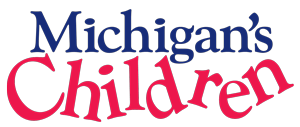Supporting Effective, Equitable Investments in Education
Earlier this month, the Center on Budget and Policy Priorities released a report reflecting what we’ve known and felt all over the state – that we in Michigan, similar to many states around the country, continue to disinvest in K-12 education. Since our ability to successfully educate all of our children through K-12 and beyond is what our future economic status rests on, this is not good news for kids, communities or Michigan’s economic recovery. We have definitely recommended an end to this trend, and will continue to do so. However, let’s talk about how and where we need to invest to provide our best chance to close our growing gaps in educational success.
I’ve begun to hear economists pointing out that the achievement gap is the largest threat to our already struggling economy. We are so glad that Michigan leaders have listened to the economists who have talked about the real economic gains that result from preschool investments. Fortunately, this is also a key gap-closure strategy, and while there are still gains to be made there, progress is happening and investment is growing.
What other investments matter in gap closure? Yes, I’ll say them again:
[bulletlist]- Year round extended learning opportunities that intentionally include resources dedicated to mitigating summer learning loss and engage young people of all ages through the school year. Michigan has in the past dedicated state appropriation for these critical programs, but has not invested consistently despite the infrastructure that exists to support quality programs.
- Better, more consistent use of the existing per pupil funding available to support young people who need a 5th and 6th year of high school to reach graduation, and better paths that connect GED success to postsecondary for the young people who fall so far behind even the 5th and 6th year will not get them toward a traditional diploma.
One that I haven’t talked quite as much about in recent blogs, but is equally important:
[bulletlist]- Direct supports for the most challenged students and families. Michigan has a long history of acknowledging the need to use state funding to try to level the financial playing field between schools that serve smaller numbers of challenged young people and those who serve more than their share. Michigan’s At-Risk funding supports supplemental programming within the school day – school breakfast programs, extra academic help, health and safety initiatives and many others. This resource has never been “fully funded,” that is, it has never had the level of resource necessary to support the number of challenged students on whose behalf school districts receive the funding at the level intended.
As we suggest reinvestment in education, which we encourage everyone to do, let’s also think about smarter investment toward programs proven to improve equity. As we move further down the path of tying school funding to certain priority practices, which is going to happen whether we recommend it or not, let’s use those incentives to promote more achievement gap closing strategies.
-Michele Corey
